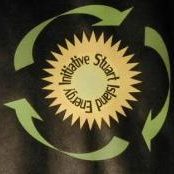Our fuel cell is a ReliOn Independence 1000, a PEM-type cell with 1 kW output at 48 volts DC. We chose PEM (proton exchange membrane) because the technology is fairly well developed and is well suited to the size of our project. Also, we were not setting up a cogeneration system (the use of both electric and heat output from the fuel cell). In that case solid oxide fuel cells, with their higher operating and exhaust temperatures, might be better suited.
In a PEM fuel cell (diagram below), hydrogen gas is fed into a catalyst layer which strips off the hydrogen’s electrons . The H+ ions travel across an electrolyte membrane to another catalyst layer which is supplied with oxygen (air). Meanwhile the hydrogen electrons take a detour through your electric appliance before returning to the fuel cell. On arrival at the oxygen catalyst, the prodigal electrons, the H+ ions and the oxygen combine to form H2O, which is the sole exhaust. NASA has long used fuel cells to provide both electricity and water for astronauts.
ReliOn focuses almost exclusively on the telecom and military markets, selling their fuel cells as back-up power units which basically replace large battery banks. As a result they make a fine product for stationary applications with DC loads. (All fuel cells have DC output, but some cells are bundled with their own inverters to give AC output. This makes no sense in our off-the-grid setting, where we already have an inverter.)
Our model does not have an adjustable voltage output, which is a serious drawback (see 24 vs 48 Volts), but ReliOn’s new T series, and in fact even some later models of the Independence series, do have an adjustable voltage. Our 48 volt model is an artifact of our experiments, and we would rather have a 24 volt model.
We had to send back our first fuel cell because of a suspected faulty vent flap. The replacement unit has worked very well for us. Tech help has been excellent.
We also purchased an “indoor installation kit” from ReliOn, which included a manifold and solenoid valve for the piping, an hydrogen sensor, and a circuit panel to tie them all together. In theory the kit also included a “wing”, or outdoor enclosure to hold the manifold and K-cylinders.
At this point we have to criticize ReliOn. Their engineers are great, but their sales team provided spotty care. In particular, we were given a run-around concerning the wing, and in the end had to buy a custom-built unit. It was a detour we did not need.
The Indoor Installation Kit was a good package, as it saved us the trouble of sourcing the various parts piecemeal.


